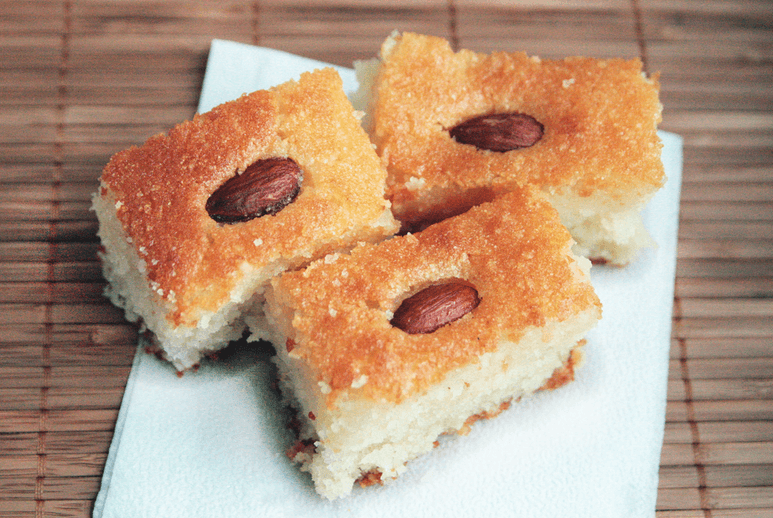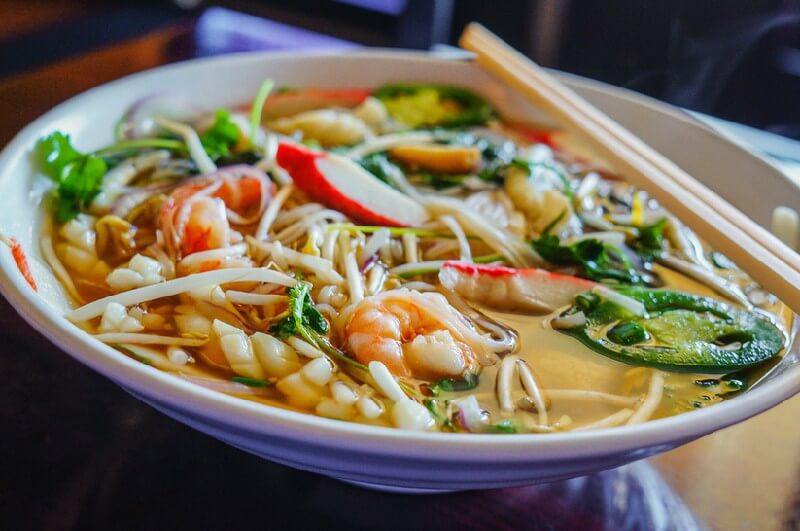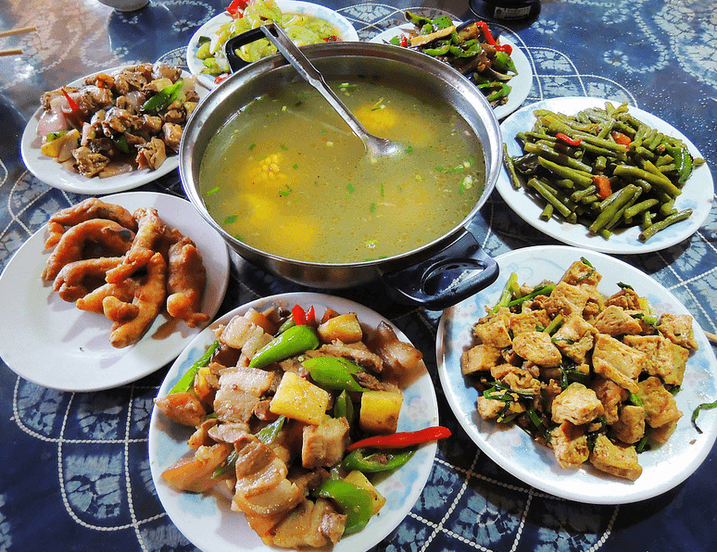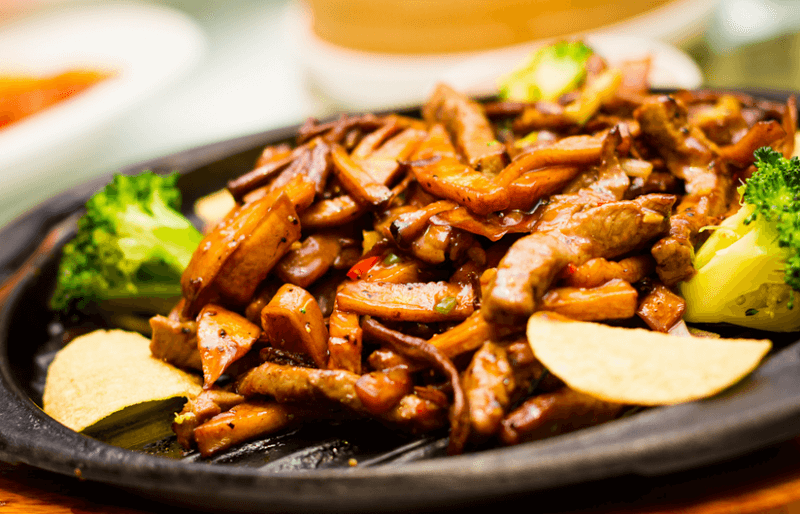National dishes of Vietnam. National cuisine of Vietnam
Rating: 8,4/10 (3950 votes) 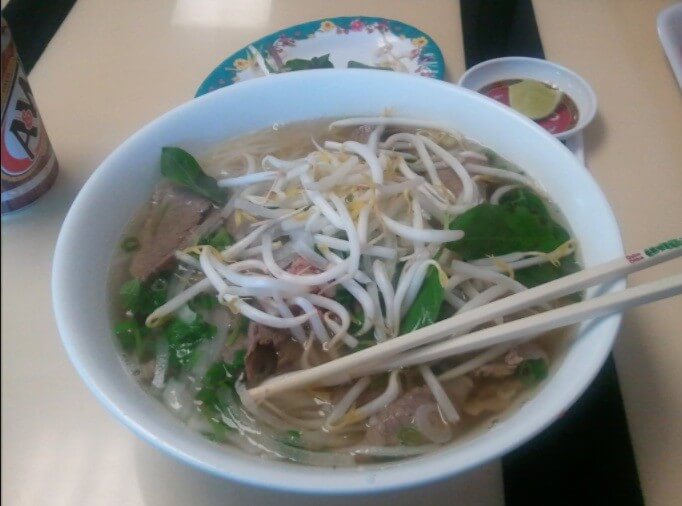 Rest in Vietnam allows you to get acquainted with all facets of the millennial culture of a friendly Asian country, and cuisine is one of these facets. The variety of national culinary traditions is reflected both in inexpensive street cafes and in fashionable restaurants. In recent years, information has been actively circulated that Vietnamese cuisine is not independent, and is only a processing of the traditions of China and Thailand. In fact, this is only part of the truth, since the Vietnamese really borrowed some of the recipes from their neighbors, but most of the dishes have a unique recipe that is not repeated anywhere else in the world. Important: The ideological the division of the country into North and South Vietnam is a long time ago, but this even influenced the culinary traditions of the population. Some dishes often served in restaurants and cafes in the south, it will be difficult to find in the north, and vice versa. Traditional Vietnamese foodThe famous Pho soup, or fu, as they themselves call it Vietnamese are perhaps the most recognizable dish of the national cuisine. It is believed that it is typical for the north of the country, but now it is prepared in literally every village, right down to the very south. It is traditionally eaten for breakfast, but this rule may not apply to tourists. According to its recipe, Pho soup is the most common stew, but the recognizable taste and aroma is obtained only thanks to a few ingredients. Some say that the zest is in rice noodles, someone assures that the flavor is obtained by boiling rice burdock and the rest of the greens. Chicken is most often used as meat, less often beef, sometimes shrimp is added to the broth.  Pho Soup Banh Kuon rice cakes are the second most popular. They are baked in special clay ovens reminiscent of our Russian, only smaller, and served with sauce. To make the sauce, you need pumpkin puree, ground roasted peanuts, fish sauce, hot peppers, garlic, onions, and lime juice. This dish is supplemented with fried onions until golden brown, mixed with cracklings. The best side dish for rice pies is fried potatoes, although some cafes and restaurants will have their own authoritative opinion on this. In some provinces, it is customary to add bean dishes to the pie - it is believed that this way the culinary delight of Vietnamese chefs will be better absorbed by the stomach. The Vietnamese Banh Mi"sandwich" became popular during the war, since American soldiers considered this dish very very similar to typical sandwiches, although this is not entirely true. If in the Anglo-Saxon sandwich tradition it is customary to use a grilled cutlet or chop, then Ban Mi is a turkey fillet fried to a crunch, wrapped in a thin flatbread or two halves of a baguette. There are several recipes for Ban Mi, one of which suggests using pork or beef. But, since meat in Vietnam is expensive, the version with turkey meat has become the most popular version of such an Asian"sandwich". One of the borrowed dishes from China is considered to be Goy Kuny - a kind of dumplings of special molding. Only unlike the Chinese versions, Vietnamese pies have a different filling and are prepared in a completely different way - not in a pan, but steamed. Also, in the Vietnamese tradition, the shape is different - instead of the usual"onions" they are made here like rolls. The filling of the Goy Kuns is different - from vegetables to seafood and pork. Rice flour dough turns out to be tender and low-calorie, so even with the “heaviest” filling, these rolls are eaten very well, without consequences for sensitive stomachs. The Vietnamese also have their own analogue of pizza - it is called Ban Seo , if literally -"hot pancake". It is prepared quite easily, from two thinly rolled round sheets of rice dough, between which the most diverse filling is added. Most often, pre-boiled spaghetti is used as a filling, although there can be a great variety of options, as well as pizza recipes. Ban Seo is usually served with sliced vegetables and soy sauce. Roasted peanuts, beans, or cold cuts are sometimes used as a side dish. A modern pie recipe can have a variant with liver, pork, or generally - sausages. The eerie name Bun Bo Hue has the most common beef soup for a Vietnamese. True, for European stomachs, this culinary delight may seem too aggressive. The point is in the special recipe of the soup, which assumes a huge amount of spices, which makes the broth simply incredibly spicy. Plus, you need to eat the soup hot, pouring some lemon juice into a bowl. Bun Riyu is considered a less spicy option from traditional Vietnamese soups. More precisely, this is not a spicy soup at all, because instead of beef, it uses sweetish crab meat, which does not go well with spices. The color of the soup is reddish due to the large amount of tomatoes, which are usually added during the cooking process. Rice porridge in Vietnam is called Chao, and it has nothing to do with the familiar Italian farewell. For many residents of the country, this thick soup is the best medicine at the first signs of a cold, because porridge is cooked along with chicken fillet or ham. For pungency, onion or black pepper is added to it, although the latter is to taste. There is also an analogue of Uzbek pilaf in Vietnamese cuisine, it is called Kom Chien here. Instead of meat, sausages and eggs are added to fried rice, but the main focus is on the vegetable filling. Only the one who prepares this dish will know the exact recipe - there are no strict rules. Of the exotic culinary delights of Vietnam, it is worth noting a dish with a very"Russian" name - Ka Kto To. In fact, this is a fish doused with real caramel. The combination of a sugary-sweet sauce with seafood is common in Vietnam, which is why such a dish is available in almost every cafe with a rating above the street eatery. Fish, by the way, can be any. Of course, Vietnamese cuisine and extreme exoticism typical for Asia, against the background of which fried frogs and scorpions in sour sauce, seem to be something completely innocent, did not pass by the Vietnamese cuisine. So, on the tables of local cafes you can see a crocodile, shark monkey brains, and even boiled duck eggs are balut - with a practically formed chick inside. Trying such exotic things or not is everyone's business, but for the Vietnamese themselves, this is exactly the same part of the local cuisine as other, less shocking European dishes. Traditional desserts of VietnamThe most popular and inexpensive dessert in Vietnamese cuisine is Banh Kam - an orange stuffed with sesame seeds. There can be so many grains inside the fruit that often only the peel remains of the orange itself, although there are several cooking options. Ban Tet cake in Vietnam was not originally a dessert - it was the main New Year's dish of meat and glutinous rice , which was wrapped in a banana leaf and served on the festive table in this form. But over time, inventive Vietnamese came up with a sweet version of the dish. The banana leaf remained in place, but the filling turned into fruit puree, or other fillings.  Ban Tet Pie Delicious coconut waffles in Vietnam are called by the hard-to-pronounce word Banh Kep La Dua. Baked according to a European recipe, these waffles have a secret ingredient that is difficult to get in the Northern Hemisphere - the tropical pandanus fruit. It gives waffles a unique aroma and taste, as well as a greenish color, which at first glance looks like mold. But you shouldn't believe your eyes here. Various puddings in Vietnam are called Che, they are served in most cafes and all restaurants, but the price of such a dessert will not be very pleasant - it is not easy to prepare them, and storage in a tropical climate is also expensive. It is made from rice, a complete set of fruits and berries, and beans, which can be prepared in a very sweet way. Traditional Vietnamese drinksIt just so happens that the traditions of soft drinks in Vietnam much older than the production of alcohol, which is reflected in the distribution of drinks throughout the country. Alcohol in Vietnam is most often imported, therefore - the prices for it are extremely high, but you should still start acquaintance with national drinks with something without alcohol. The most popular non-alcoholic drink in Vietnam is Mia, or Mia Da, if with ice. This is cane juice with tangerine juice added. The taste is refreshing and naturally sweet, which influenced the great love of the drink among the local population. You need to buy a version of such a drink with ice carefully - there may be more ice than the juice itself. The name RauMa hides the natural juice of Asian centella. The poisonous green liquid turns out to be a very healthy drink that the locals drink for many diseases. Its taste is very specific, as well as the smell, therefore, the drink did not get such great popularity as cane juice. Coffee in Vietnam is drunk cold, and better - with ice, ideally with ice and condensed milk. The explanation for such a specific recipe is simple - in a country with a hot climate, hot drinks do not take root too much. There are several dozen more accurate recipes for making coffee. Of the alcoholic drinks in Vietnam, ginseng tincture is most often mentioned. According to the method of preparation, it is a liqueur that can be used as a base for cocktails. In its pure form, it is rarely drunk and in small quantities. Another, medical liqueur is a sight typical for Asian countries - alcoholized scorpions, snakes and other creatures used in folk medicine. The name speaks for itself - you cannot drink this drink in large volumes.  Vietnamese rice vodka Vietnamese rice vodka is very different from the Russian counterpart - the taste is specific, and the quality, as noted by amateurs, is far from the standard. But the beer in Vietnam is brewed quite good, some varieties, for example, Saigon, are already being exported. We also recommend reading The Big Ural Ring Topic: National dishes of Vietnam. National cuisine of Vietnam. |
